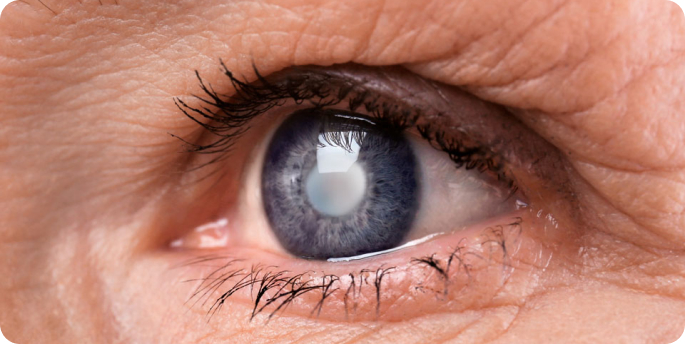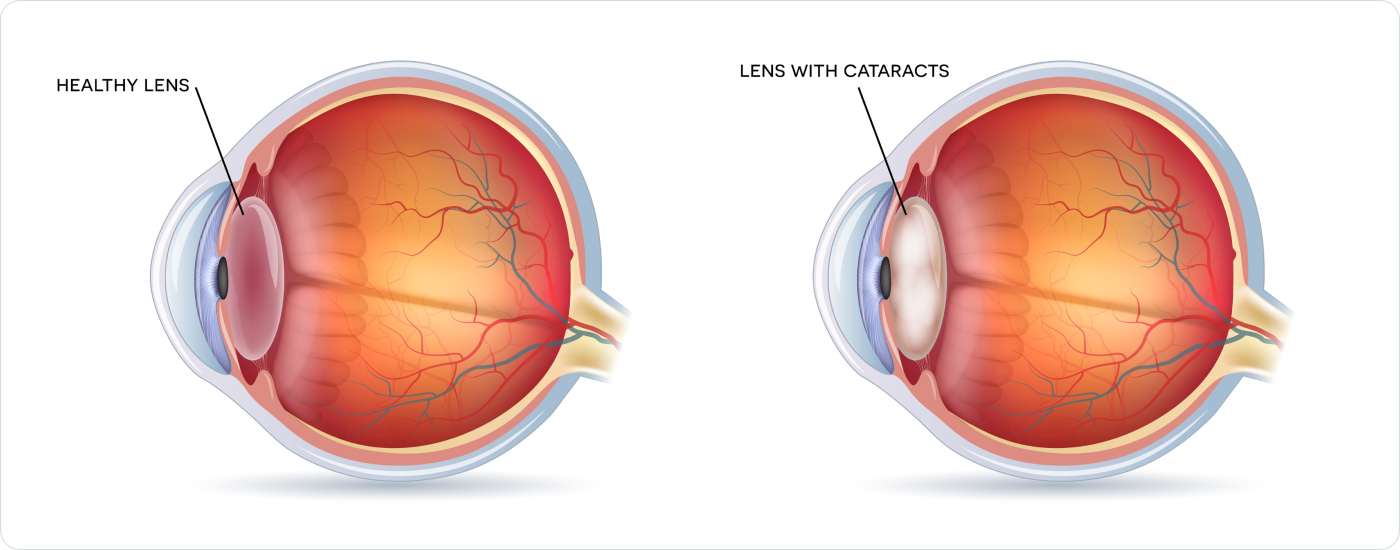cataract is a condition characterized by a cloudy lens in the eye, which can impair vision and lead to symptoms like glare from unwanted light. Although cataracts are primarily associated with aging, other factors such as eye injuries, certain medications, genetics, and diabetes can also contribute to their development.
Cataract treatment is recommended when blurred vision begins to interfere with daily activities, such as reading, watching TV, or driving. The standard treatment for cataracts is surgery, which involves removing the cloudy lens and replacing it with a clear artificial lens.

This procedure is typically done as a routine outpatient case, lasting about 15 minutes. It can be performed under local or general anesthesia, depending on the patient’s needs. Cataract treatment for both eyes can be scheduled on separate days or on the same day, based on various factors.
Most cataract surgeries involve the implantation of a monofocal lens, which provides clear vision at a single distance, typically for seeing objects far away. Patients will still need reading glasses for close-up tasks, such as reading or using a phone.
Patients with significant astigmatism can benefit from a toric lens, which helps reduce astigmatism. This option can be discussed during your consultation.
For those who want to be free from glasses, multifocal or Enhanced Depth of Focus (EDoF) lenses provide clear vision at various distances without the need for corrective eyewear.

Pre-operatively, you will engage in a detailed discussion with us about your eye symptoms and your goals for the procedure. We will talk about the different types of lenses and the options for anaesthesia. Additionally, several assessments and measurements of your eyes will be carried out to help us determine the best type and size of lens for you.

After the surgery, you will need to use prescribed eye drops. Typically, your vision will improve within a few days; however, in some cases, it may take 1 to 2 months for your vision to stabilize and for healing to be complete. We will provide you with our contact number so you can reach out if needed. We will also arrange a follow-up appointment within a few days to a couple of weeks to monitor your progress.
The cost of surgery varies depending on the type of lens used. The total cost includes the procedure fee (including surgeon’s fees, lens cost and hospital charges) and post-operative follow-up for up to three months.
Below is an approximate breakdown of the pricing.



